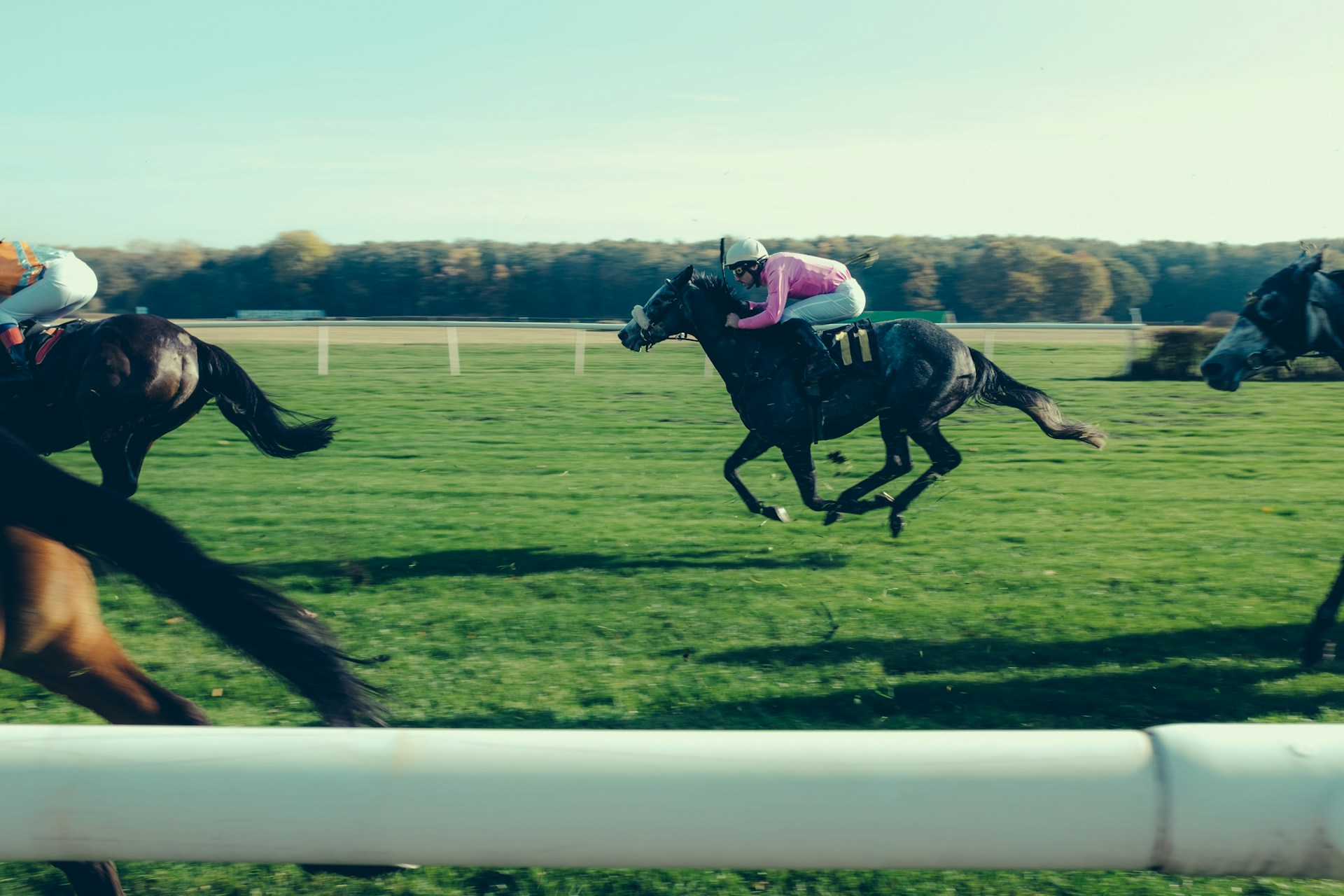Horse racing, often dubbed the “Sport of Kings,” showcases a storied heritage stretching back centuries. This competitive spectacle has undergone remarkable transformations, with strategies and methodologies evolving to meet the demands of modernity while still cherishing its historical roots. At the heart of these changes are factors such as selective breeding, technological innovations, the pivotal role of jockeys and trainers, and the physiological enhancements of the equine athletes themselves.
Historical Progression of Horse Racing Tactics
From its inception, the strategy behind horse racing was straightforward: the fastest horse wins. However, as the sport grew in popularity, the need for more sophisticated tactics became apparent. Selective breeding emerged as a cornerstone for improving equine performance, focusing on speed, stamina, and agility. Breeders meticulously paired stallions and mares to produce offspring with desirable traits, leading to the creation of breeds specifically designed for racing, such as the Thoroughbred.
Technological advancements also played a significant role in shaping modern racing tactics. The introduction of starting gates in the early 20th century ensured fairer starts, while advancements in track maintenance led to faster, safer surfaces. Furthermore, the advent of precise timing technology provided accurate race times, allowing for more detailed analysis of performance and strategy.
Training methodologies too have evolved. Initially, training regimens were based on trial and error, but over time, they have become more scientific. Incorporating knowledge from veterinary medicine, nutrition, and exercise physiology has enabled trainers to optimize their horses’ performance, leading to consistently faster racing times.
The Crucial Role of Jockeys and Trainers
The symbiosis between horse, jockey, and trainer cannot be overstated. A jockey’s ability to read the race, understanding when to hold back and when to push forward, can be the difference between victory and defeat. Similarly, trainers make critical decisions that affect race outcomes, from selecting the races that best suit a horse’s abilities to devising training schedules that peak a horse’s performance on race day.
Analyzing the partnerships between successful jockeys, trainers, and their horses reveals a pattern of deep understanding and mutual trust. This dynamic trio’s strategy involves more than just physical preparation; it encompasses psychological readiness, with each member playing a pivotal role in developing winning tactics.
Intrinsic Factors Influencing Horse Racing Performance
At the core of a racehorse’s ability lies a combination of physiological attributes fine-tuned for speed and endurance. Over generations, selective breeding has emphasized these qualities, producing equine athletes capable of remarkable feats. Muscular composition, for instance, leans heavily towards fast-twitch fibers, enabling explosive speed. Meanwhile, a highly efficient cardiovascular system ensures sustained performance over distance races.
Advancements in veterinary care and nutritional science have further augmented these natural abilities. Today, equine health and fitness are monitored with meticulous precision, ensuring that horses are in peak condition for racing. Genetic research also continues to unlock the secrets of speed and stamina, guiding breeding decisions to further enhance these intrinsic qualities.
Technological Advancements Shaping Modern Horse Racing
The digital revolution has left no stone unturned, and horse racing is no exception. High-speed cameras and motion tracking technology have provided trainers with unprecedented insights into a horse’s gait and biomechanics, allowing for highly tailored training programs. Real-time data analysis tools offer a deeper understanding of performance metrics, enabling adjustments to training and racing strategies on
the fly.
For fans and bettors, online platforms have transformed the experience of engaging with horse racing. The convenience of online betting, coupled with the abundance of data and analytics, has made the sport more accessible than ever. Notably, bookies offer free bets during Cheltenham, attracting new enthusiasts and seasoned bettors alike to partake in the excitement of one of the sport’s premier events. Furthermore, artificial intelligence now plays a role in predicting race outcomes, providing an intriguing blend of technology and tradition in the sport’s strategic landscape.
The impact of technology extends beyond the track and the betting office. Social media and mobile apps have brought fans closer to the action, offering behind-the-scenes glimpses and real-time updates that enrich the racing experience. In this era of connectivity, horse racing has embraced technology to maintain its relevance and appeal to a global audience.
Incorporating Modern Insights into Traditional Tactics
The marriage of time-honored strategies with cutting-edge technology exemplifies the modern approach to horse racing tactics. Data-driven decision-making complements the intuitive skills of jockeys and trainers, creating a powerful synergy that enhances performance. This fusion of old and new ensures that the sport continues to evolve, pushing the boundaries of speed and competition.
Equine athletes benefit from this holistic approach, which considers every aspect of their well-being and preparation. From advanced training facilities that simulate race conditions to wearables that monitor health indicators, every tool at our disposal is used to achieve a competitive edge. This comprehensive strategy embodies the spirit of innovation that drives the sport forward.
As horse racing continues to navigate through the challenges and opportunities of the 21st century, its tactics remain in a state of dynamic evolution. Traditional wisdom blends seamlessly with modern insights, creating a thrilling spectacle that honors its rich heritage while eagerly anticipating its future achievements. If you’d like to get a piece of the action, bookies offer free bets during Cheltenham.

Famous Horse Racing Tactics in Modern Times
In the realm of modern horse racing, the interplay of strategy, skill, and sometimes a bit of luck, defines the thin line between victory and defeat. Over the years, several tactics have emerged, some due to innovative thinking and others born from the natural evolution of the sport itself. These strategies, employed by astute jockeys and trainers, have often led to memorable victories and surprising upsets. Let’s explore some of the most renowned tactics that have shaped modern horse racing.
Blinkers: Sharpening Focus
One of the simplest yet most effective tools in a trainer’s arsenal is the use of blinkers. These are devices designed to limit a horse’s peripheral vision, ensuring they remain focused on the path ahead rather than distractions around them. Horses, being prey animals, can be easily spooked or distracted by their surroundings. By narrowing their field of view, blinkers help these equine athletes maintain a straight course, crucial in the high-stakes environment of a racetrack. The introduction of blinkers has been a game-changer for many horses, transforming unfocused runners into champions.
Racing Wide: Avoiding the Crush
Another tactical approach is racing wide. This strategy involves positioning the horse towards the outer part of the track, especially in races packed with contenders. The logic is straightforward: by circumventing the tightly packed group, a horse can avoid getting boxed in or having to slow down due to traffic. Although racing wide might mean covering a slightly longer distance, the benefits of maintaining a steady pace without interference often outweigh the cons. This tactic is particularly advantageous in longer races where a clear run is more beneficial than the shortest route.
Stalking: The Art of Conservation
Stalking is a methodical, patient strategy. Here, the jockey positions their horse just behind the frontrunners, conserving energy by drafting behind the leaders. This tactic relies on the understanding that leading the race from the start can be energetically taxing for the front-runner. Stalkers wait for the optimal moment, usually in the final stretches, to surge ahead, capitalizing on their preserved energy. This strategy requires a jockey to possess a keen sense of timing and an intimate knowledge of their horse’s capabilities.
First-Time Lasix: A Pharmacological Boost
The administration of Lasix, a diuretic that prevents bleeding in the lungs during strenuous exercise, has been a contentious but notable tactic. When used for the first time, Lasix can significantly enhance a horse’s performance, particularly in demanding races. This is due to the medication’s ability to prevent respiratory issues that could hamper a horse’s endurance and speed. While its use is regulated, the strategic timing of its first administration can be a legal and tactical advantage in a horse's racing career.
Rider Positioning: A Balancing Act
The physical dynamics between jockey and horse are pivotal. How a rider positions themselves can dramatically affect a horse’s balance, stride, and speed. By adjusting their posture and weight distribution, jockeys can optimize their mount’s performance, encouraging longer strides or more rapid acceleration as needed. This tactic demands a deep understanding of equine biomechanics and a harmonious relationship between rider and steed.
Handicapping: The Quest for Equity
Handicapping, the practice of assigning different weights to horses based on their past performances, introduces a fascinating strategic layer to racing. This system aims to level the playing field, allowing less accomplished horses to compete more fairly against their decorated counterparts. Trainers and jockeys must adapt their strategies to these weight variations, often devising inventive training regimens and race-day tactics to overcome the handicaps. This aspect of horse racing adds depth and complexity, challenging the participants to excel under varied conditions.
These tactics represent the confluence of tradition and innovation in horse racing. From the psychological boost afforded by blinkers to the physiological advantage provided by Lasix, and from the strategic positioning within the race to the balancing act performed by jockeys, each tactic underscores the multifaceted nature of the sport. As horse racing continues to evolve, so too will the strategies employed by those who participate in it, ensuring that this ancient sport remains as dynamic and engaging as ever.






















